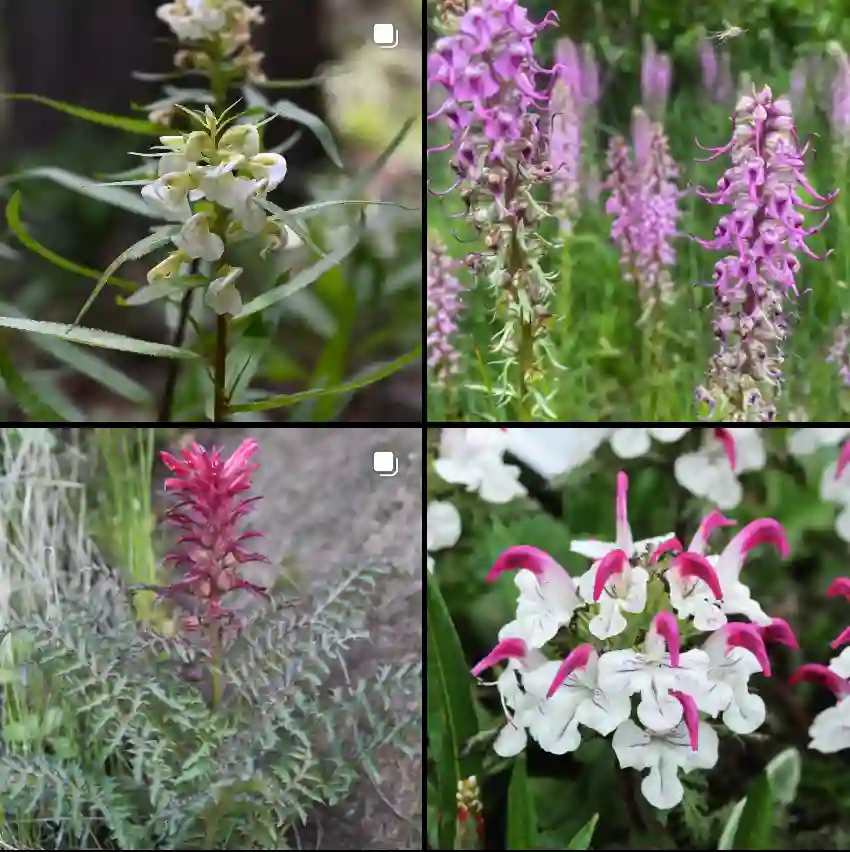FAQs About Autumn Inferno Cotoneaster
When I first came across the Autumn Inferno Cotoneaster, I was immediately captivated by its vibrant foliage and sturdy nature. This deciduous shrub, known for its striking autumn colors, quickly became a favorite in my garden. Over time, I’ve received numerous questions about how to care for, grow, and utilize this plant in various landscapes. Here, I’ll address some of the most frequently asked questions about the Autumn Inferno Cotoneaster.
272 Species in Genus Cotoneaster
What is the Autumn Inferno Cotoneaster?
The Autumn Inferno Cotoneaster is a deciduous shrub that is highly valued for its vibrant fall foliage. As the name suggests, its leaves turn fiery shades of red, orange, and yellow in autumn, creating a stunning display in the garden. This plant is part of the larger Cotoneaster family, which is known for its hardiness and versatility in landscaping.
How to Care for Autumn Inferno Cotoneaster?
Caring for the Autumn Inferno Cotoneaster is relatively straightforward, which is one of the reasons I love it so much. It thrives in full sun to partial shade and is quite adaptable to different soil types, though it prefers well-drained soil. During the first year after planting, I make sure to water it regularly to help establish its roots. Once established, this shrub is drought-tolerant, making it an excellent choice for low-maintenance gardens.
I usually prune my Autumn Inferno Cotoneaster in late winter or early spring to maintain its shape and encourage healthy growth. Pruning also helps to control its size, as this shrub can grow up to 6 feet tall and wide.
What is the Growth Rate of Autumn Inferno Cotoneaster?
One of the aspects that gardeners often ask me about is the growth rate of Autumn Inferno Cotoneaster. From my experience, this shrub has a moderate growth rate. It takes a few years to reach its mature size, but once established, it fills out nicely, providing a dense and attractive form in the landscape.
If you’re looking to fill a space quickly, you might want to plant several young shrubs together to create a fuller appearance as they grow.
Is Autumn Inferno Cotoneaster Deer Resistant?
In my area, deer can be a major issue, so having deer-resistant plants is crucial. Fortunately, the Autumn Inferno Cotoneaster is considered deer resistant. While no plant is entirely deer-proof, I’ve noticed that deer tend to avoid this shrub, especially when there are more appealing options nearby. This makes it an excellent choice for gardens where deer are a concern.
How Does Autumn Inferno Cotoneaster Look in Winter?
One of the things I appreciate most about Autumn Inferno Cotoneaster is how it holds up during winter. After the leaves fall, the shrub’s red berries remain, providing a pop of color against the winter landscape. These berries are not only visually appealing but also attract birds, adding life to the garden during the colder months. The plant’s branches have a neat, arching form that looks lovely even when bare, providing structure and interest throughout the winter.
How to Propagate Autumn Inferno Cotoneaster?
Propagating Autumn Inferno Cotoneaster is relatively easy. I typically use semi-hardwood cuttings taken in late summer or early fall. After cutting a healthy stem, I remove the lower leaves and dip the cut end in rooting hormone. Then, I place it in a pot filled with a well-draining soil mix. Keeping the soil moist and the cutting in a bright, indirect light location helps it to root successfully.
Another method is layering, which involves bending a low-growing branch to the ground and covering a portion of it with soil. This method requires patience but is highly effective.
What to Plant with Autumn Inferno Cotoneaster?
When choosing companion plants for Autumn Inferno Cotoneaster, I look for those that complement its vibrant fall color and offer contrasting textures. Ornamental grasses like Miscanthus or Panicum are great options, as their airy plumes add movement and height to the garden. I also like to pair this shrub with evergreens such as Boxwood or Juniper, which provide year-round greenery and emphasize the autumn display of the Cotoneaster.
What Are the Uses of Autumn Inferno Cotoneaster in Landscaping?
In my garden, I’ve found Autumn Inferno Cotoneaster to be incredibly versatile. It works well as a hedge or border plant, where its dense foliage provides privacy and wind protection. I’ve also used it in mixed shrub borders, where it adds a splash of color in the fall. Its compact size makes it suitable for smaller gardens, and it can even be used in large containers.
How Does Autumn Inferno Cotoneaster Compare to Other Cotoneasters?
Compared to other varieties, the Autumn Inferno Cotoneaster stands out for its exceptional fall color. While many Cotoneasters offer red berries and attractive foliage, the intense autumn hues of this variety are truly unmatched. In my experience, it also has a more compact growth habit than some of the larger Cotoneasters, making it easier to manage in a garden setting.
Conclusion
The Autumn Inferno Cotoneaster is a plant that brings beauty and resilience to the garden. Whether you’re looking for a vibrant fall display, a deer-resistant shrub, or a plant that adds winter interest, this shrub ticks all the boxes. With its moderate growth rate, ease of care, and versatility in landscaping, it’s no wonder that it has become a staple in my garden. If you’re considering adding one to your landscape, I highly recommend it—you won’t be disappointed.
If i die, water my plants!



